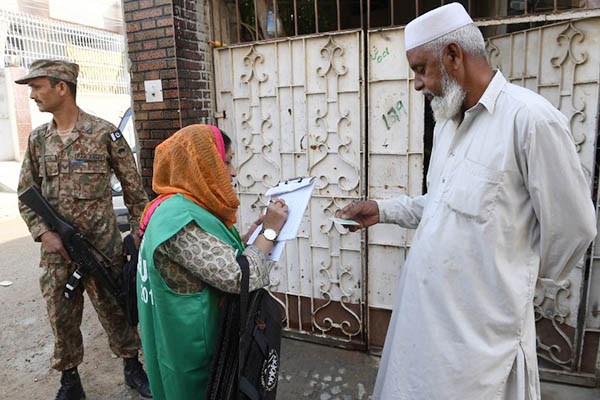
Asif Hassan—AFP
Early results show average annual growth rate of 2.4 percent from 1998 to 2017
Pakistan’s population has surged by more than half to 207 million, according to provisional results of the country’s first census in almost two decades released by the statistics board on Friday.
Once confirmed in the final report, Pakistan could be set to overtake Brazil as the world’s fifth most populous country, according to statistics on the U.S. Census Bureau website.
Prime Minister Shahid Khaqan Abbasi praised the work of census officials and called for “early completion” of the final figures, a statement from his office said. No date has yet been announced for the release. Abbasi also lauded the victims of several attacks targeting census officials, including a bomb blast in Lahore in April that killed at least seven people.
Pakistan had not held a census for nearly two decades due to years of bickering by politicians concerned it could redraw the political map, raising fears over power bases and federal funding. The provisional results published by the Pakistan Bureau of Statistics showed an average annual growth of 2.4 percent since 1998, when the total population was put at 132.35 million.
The updated figure—an increase of around 57 percent since 1998—is higher than the estimate of 200 million that had been in wide use.
Central Punjab province remained far and away the most populated, home to more than 110 million people or more than half the country—but it also showed the slowest average annual growth rate, at 2.13 percent. The areas with the fastest growth rates were Balochistan province, with a population of more than 12 million and an average growth rate since 1998 of 3.37 percent, and the Islamabad Capital Territory, whose population passed two million with an average growth rate of 4.91 percent.
The results from the count, which began in March, are also set to help give a clearer picture about religious minority numbers in the Muslim-majority country.
The weeks-long process, a challenge in a country known for corruption and dysfunction, deployed a team of more than 300,000 people and involved 55 million forms. The results will be the basis for revising political boundaries, parliamentary seat allocations and finances ahead of national elections, due to be held by the end of 2018.
Powerful Punjab province, for example, could see its political grip weaken as a result of its population not rising at a similar rate to other provinces.
